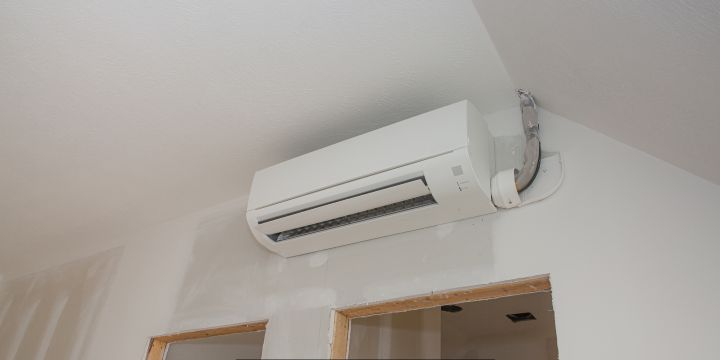Key Takeaways:
- Mini Split HVAC systems offer effective heating solutions even in cold climates.
- They provide energy efficiency, cost savings, and flexibility to meet individual room needs.
- Technological advancements have enhanced their ability to operate efficiently in low temperatures.
Table of Contents:
- Introduction
- Understanding Mini Split HVAC Systems
- Performance in Cold Climates
- Energy Efficiency
- Flexibility and Design
- Cost Considerations
- Installation and Maintenance Tips
- Conclusion
Introduction
Maintaining a warm and comfortable home environment in cold climates can be challenging and expensive, particularly during the harsh winter months. As homeowners seek efficient and cost-effective solutions, mini split HVAC system have emerged as a compelling option. These systems, once primarily known for their cooling capabilities, have seen advancements that allow them to facilitate heating, even in extreme weather conditions effectively. This article explores the efficacy of Mini Split HVAC Systems in cold climates, examining how they operate, their benefits, and considerations for maximizing their performance.
Understanding Mini Split HVAC Systems
Mini Split HVAC Systems, or ductless mini splits, comprise an indoor unit and an outdoor compressor. These systems function without traditional ductwork, enabling zoned heating and cooling in specific areas or rooms. This setup allows for targeted climate control, optimizing comfort and energy usage. The outdoor unit extracts heat from the outside air and transfers it inside, even when outdoor temperatures are significantly low, making it a viable option for cold climates. One of the significant advantages of Mini Split HVAC Systems is their versatility. They provide a tailored solution for homes with unique configurations, where installing a traditional HVAC system might be impractical or excessively costly. Additionally, their sleek design allows for unobtrusive placement, blending seamlessly with a room’s interior decor.
Performance in Cold Climates
In cold climates, the primary concern for any HVAC system is the ability to generate sufficient heat when outdoor temperatures drop. Mini Split HVAC Systems have technologies that allow them to function effectively in cold weather. Featuring advanced inverter technology and enhanced refrigerant flow, these systems can efficiently absorb and extract heat from outside air, even in sub-zero temperatures. Moreover, some models are specifically designed to operate in colder conditions, focusing on enhanced heating capacity and performance. The technology in these units ensures that they continue to operate efficiently, minimizing energy use while providing consistent heating. This makes Mini Split HVAC Systems a reliable choice for maintaining warmth and comfort in homes situated in colder regions.
Energy Efficiency
Mini Split HVAC Systems are renowned for their energy efficiency, which is a crucial consideration in areas with long, cold winters. These systems can significantly reduce energy consumption by allowing room-by-room temperature control, as only occupied spaces require heating. This zoned approach contrasts with traditional central heating systems, which often heat the entire home indiscriminately, wasting energy in unoccupied areas. In addition to zoned heating, Mini Split HVAC Systems are designed to operate with high energy efficiency ratings. They often surpass the efficiency of conventional systems by using variable-speed compressors that adjust output according to demand. This capability eliminates the frequent on-off cycling that plagues traditional systems, resulting in more efficient operation and further energy savings.
Flexibility and Design
The flexibility of Mini Split HVAC Systems in terms of installation is a significant advantage for homeowners, especially in older homes or those lacking existing ductwork. These systems only require a small hole for the conduit, making installation less invasive than traditional systems. This flexibility also extends to placement, with options for wall-mounted, floor-standing, or ceiling-mounted units, allowing a customized fit for any space. The design flexibility also contributes to aesthetic appeal. The compact and unobtrusive indoor units are designed to blend seamlessly into any room design, eliminating the need for unsightly radiators or large vents present in central heating systems. Additionally, the absence of ductwork reduces heat losses associated with duct systems, further enhancing energy efficiency.
Cost Considerations
The initial cost of Mini Split HVAC Systems can be higher than that of conventional heating methods. However, their long-term cost-effectiveness is driven by their energy efficiency and ability to lower monthly utility bills. Investing in a Mini Split System often results in significant savings due to reduced energy consumption over time, recouping the initial expenditure. Moreover, the absence of ducts reduces installation and labor costs, as there’s no need for extensive renovations typically associated with central systems. Additionally, since Mini Split Systems allow for independent control of zones, they minimize wasteful energy use, leading to substantial savings on heating costs. Many homeowners find that the reduced operational costs and enhanced comfort quickly justify the initial investment.
Installation and Maintenance Tips
Proper installation ensures Mini Split HVAC Systems’ optimal performance and longevity. It is recommended that these systems be installed by professionals experienced with the nuances of ductless HVAC setups. Correct placement of both the indoor and outdoor units is crucial to avoid obstructions and maximize airflow. Regular maintenance, such as cleaning or replacing filters and ensuring the outdoor unit is debris-free, will enhance efficiency and reliability. In cold climates, additional measures such as snow guards or protective covers for the outdoor unit may be necessary to prevent ice build-up and ensure uninterrupted operation. Routine checks and timely service by a qualified technician can address potential issues before they affect the system’s performance, ensuring consistent and efficient heating throughout the winter.
Conclusion
For homeowners in cold climates, ensuring a warm and cozy indoor environment during harsh winters is essential. Mini Split HVAC Systems offer an effective and efficient heating solution, with technological advancements enabling their successful operation in cold weather conditions. By providing energy-efficient, flexible, and aesthetically pleasing heating options, these systems present a compelling alternative to traditional HVAC systems. They enable tailored climate control that maximizes comfort while minimizing energy consumption and costs. As a result, in regions where winter can be unforgiving, Mini Split HVAC Systems prove to be a reliable ally in maintaining a comfortable home environment year-round.








